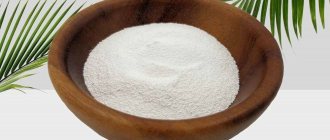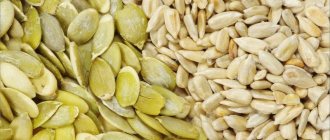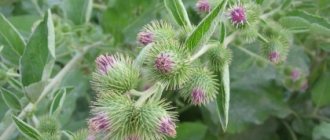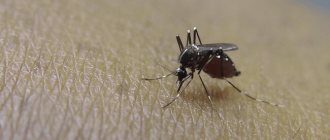Every gardener and gardener dreams of growing a good harvest, which will be a worthy reward for the time and effort spent. It will not be possible to achieve the desired result without fertilizing and protection from pests and diseases. Onion peels for the vegetable garden can be the best help among folk remedies.
It contains a complex of vitamins, mineral salts, carotene, quercetin, and phytoncides. All this has a beneficial effect on plants, activates their development and improves soil structure. Also, onion peelings have a disinfecting effect, which helps protect crops from damage by pests and fungal diseases.
Composition and beneficial properties
Onion peels contain many valuable mineral and biologically active substances that nourish plants, promote their quality development, and protect them from pests and diseases. Before using onion peels for your garden, study its main organic elements:
- phytoncides - concentrated on the surface scales of onions, protect the plant from damage by harmful bacteria and fungi.
- carotene - considered the life-giving force of plants, the largest amount is found in carrots, but there is also plenty of it in onions. The substance helps to grow high-quality seedlings and increase crop resistance to various diseases. Carotene is especially recommended for places with poor ecology and high gas pollution. Remember that the substance destroys harmful microorganisms (especially rot and fungus) and is a natural immunostimulant that suppresses the formation of free radicals.
- B vitamins - the more of them, the more valuable the product is considered. Very useful infusions are obtained from the husks, rich in these vitamins. It is recommended to water young seedlings with nutritional complexes: this helps stimulate growth, strengthen the leaves and stems of plants, and prevent the occurrence of root rot.
- nicotinic acid (vitamins of the PP group) is a necessary component for the high-quality processing of nitrogen and sulfur. The overall development of culture depends on the presence of this substance. Nicotinic acid helps the necessary oxidative reactions occur in living cells and improve the process of root formation, which is very important when keeping plants in heavy soil.
What useful elements does it contain?
Of course, onion peels are not among the top 3 most important fertilizers for plants. However, it contains useful vitamins (A, B, C, E, PP). In addition, it is a source of phytoncides, beneficial mineral salts and organic acids. The husk contains small doses of trace elements (for example, phosphorus, copper, magnesium). The peels also contain rutin and quercetin, which are needed to increase the sweetness of fruits, and carotenoids that protect against pathogenic fungi.
All this makes onion peel a useful fertilizer. A kind of vitamin complex for plants, an important dietary supplement that strengthens the health and immunity of vegetables, berries and fruit crops.
How to use onion peels in the garden
Onion peels are used as garden fertilizer and for:
- mulching the soil;
- disease prevention;
- repelling parasites;
- combating viral and bacterial diseases.
Using onion peels in the garden
For pest control
Peeling onions effectively destroys a huge number of pests. Unlike ready-made chemicals sold in specialized stores, onion peels are absolutely safe for plants. It will saturate the garden crops with useful substances and repel pests. Use cleanses against:
- Colorado potato beetle;
- codling moth;
- aphids;
- common earwig;
- thrips;
- fleas;
- spider mite.
Water or spray the garden early in the morning or at sunset, otherwise the solution that gets on the leaves will burn them. Use the recipes for preparing the working fluid, indicating its concentration for watering and spraying:
- Universal composition - take 2 handfuls of onion peel, pour in 10 liters of warm water, cook for 3-5 minutes, remove from heat, cover, leave for 4 hours. Before use, dilute 2 liters of liquid with 10 liters of water
- Concentrated solution to combat thrips and spider mites - 1 liter jar of onion peel, pour 2 liters of warm water, leave the mixture for 2 days, strain, dilute with water in a ratio of 1:2, add 1 tbsp. l. laundry soap shavings. Process foliage on both sides.
- Composition against aphids on tomatoes, cucumbers – 1 tbsp. pour 10 liters of boiling water over onion peel, wait 12 hours, strain. Spray affected plants or wash foliage. Treatment is carried out every 4 hours. After killing the aphids, the infusion can be used for prevention: spray the composition every 2 weeks.
- A decoction will help get rid of the Colorado potato beetle and codling moth - pour 3 handfuls of peels into 3 liters of water, cook the mixture for 5 minutes, leave under a closed lid for 4 hours. Before using 1 liter of concentrated liquid, dilute 5 liters of water.
Preparing to spray plants with onion peels
What diseases of garden crops is it used against?
- Dry peels, concentrated onion infusion or decoction will help cure garden plants. Cleaning effectively copes with:
- black leg - for treatment use poison or infusion, for prevention - dry husk, adding it to the soil.
- downy mildew or downy mildew - often affects cucumbers and appears at different stages of crop development. Prevention and treatment are carried out by spraying the infusion: spray the plants at the first signs of damage - detection of drooping, wrinkled leaves, yellowish spots on their outside. Regular treatment is carried out every 5 days.
- bacteriosis of radish and cabbage - an infusion is used for treatment. Treatment by spraying.
- bacterial cancer of tomatoes - the infusion is used for spraying and watering.
Signs of bacterial cancer
We fight pests - how to do it correctly, in what proportions and dosages
Onion peels have a repellent effect against pests. This allows the use of products based on it for prevention and at the initial stage of damage. Timely application helps minimize damage, promotes rapid recovery and prevents the massive spread of pests.
Spider mite
The lesion can be identified by yellow small dots along the edges of the leaves, a dejected general appearance and a thin cobweb that envelops the tops of young shoots.
This pest feeds on cell sap, which weakens the plant and leads to slower development. To combat spider mites, you need to spray the crops with a decoction 2-4 times every 1 week.
Method for preparing an effective remedy:
- Pour boiling water over the husks in a ratio of 1 to 2.
- Let the infusion stand for two days, stirring it occasionally.
- Strain thoroughly before use.
- Add water - 1 to 1 to the resulting concentrate.
- Additionally, rub 50 g of laundry soap into the mixture.
- Stir until a homogeneous mixture is obtained.
Aphid
The pest forms a whole colony. Insects feed on the sap of young shoots and leaves, which leads to their deformation. And if measures are not taken in a timely manner, you may be left without a harvest at all. An infusion of onion peels helps against pests. The product should be applied once for spraying when the first signs of aphids appear.
Recipe:
- Add 200 g of husk to an 8-10 liter bucket of warm water.
- Stir the mixture and cover with a lid.
- Leave for 24 hours in a warm place.
- After time, strain.
- Then add 50 ml of dishwashing liquid (required as adhesive).
- Mix and use as directed.
Garden ants
You can also get rid of ants using onion peels. In this case, infusion helps solve the problem. It should be used to spray places where insects and anthills move. Carry out the procedure daily until signs of ants in the area are completely eliminated. The product has a contact effect, the protection lasts until the first rain.
Method for preparing an effective solution:
- Place 200 g of peelings in a bucket.
- Then pour in 1 liter of warm water.
- Leave the mixture for a day, stirring occasionally.
- After the time has passed, clean the product by straining.
- Bring the total volume of liquid to 10 liters.
Read: The best ways to get rid of ants in the garden
Dry onion peels as fertilizer
The use of onion peels in the garden is to mulch and fertilize the soil to improve the growth of garden crops. Feed the plants in the garden in spring or autumn, while digging the beds. In addition, the husks can be added to the soil when planting seedlings in the garden: add a handful of husks to each hole. If you want to use the peelings as mulch, chop them up and scatter them around your garden crops. In this case, you will fertilize the plants, disinfect, and mulch the soil.
Precautions for use
It is very difficult to harm plants with onion skins. However, we list some points that you need to pay attention to.
- The decoction is applied immediately. The finished product is not stored, as it loses all its beneficial properties.
- There is no need to add too much husk to the hole when planting. This can cause the fruit to become bitter. This is especially true for cucumbers.
- Although onion peels are safe, it is better to apply the solution on moist soil.
Decoction
Use the decoction as a top dressing and natural insecticide. It helps get rid of:
- aphids;
- codling moths;
- thrips;
- spider mite;
- different types of fleas;
- Colorado potato beetle.
Onion peels before use
The cooking process differs in that the mixture is brought to a boil. Infusion time is 3-12 hours. Here are some popular methods for creating a nutritious infusion:
- Take 2 handfuls of onion peels, add 10 liters of water, bring the mixture to a boil, cook for 5 minutes, leave for about 4 hours.
- Add onion skins to water (proportions 1:2), boil the mixture for 3-5 minutes, leave for 1-2 days.
Fertilizer preparation
The collected husks are stored for years in a dry place in a box in the kitchen, where they are collected during cooking.
Important! After applying fertilizer to the roots, watering is not necessary as when applying any fertilizer.
Natural look
Onion peels do not require special preparation before use. It is buried in a hole as a local fertilizer and scattered on the ground as mulch in greenhouses. At the same time, it is moistened with water so that it does not fly apart.
Infusion
You can pour cold water over the peel and leave it in the sun. The concentration will be less saturated and the effect will not be as strong as when using boiling water in cooking.
Important! The infusion of onion peels is made without boiling - in cold or hot water.
Pour ¼ of the volume of dry peel (200 g) into a bucket, add 10 liters of warm water (not boiling water) and place it in the sun for 4 days. Fruit trees and shrubs are sprayed with this liquid.
If you need a smaller volume of infusion, then take 2 cups of tightly packed husks and pour into 2 liters of boiling water. Infuse in an enamel pan for 2 days. The resulting concentrate is diluted before use 1:2 for root nutrition.
For foliar feeding and spraying of plants, as a preventive measure against the appearance of aphids and other pests, a less concentrated infusion is prepared. The bucket is half filled with onion scales, hot water is poured in and left for 2 days, filtered and diluted twice.
Important! Liquid fractions of onion peels are only useful on the day of preparation; they should not be made in advance.
Decoction
Several handfuls of husks are poured into an enamel bucket of water, heated to a boil and left to steep until it cools.
If you need a smaller volume, then use 2 liters of flakes. The decoction is a concentrated substance with P-vitamin action, that is, it increases the ability to exchange various particles with the environment. They are bred depending on further goals. It is used to fertilize plants and fight pests.
Important! The main purpose of the infusion and decoction is to extract beneficial substances from the plant. The difference lies in the speed of cooking.
Onion peel infusion for plants
This fertilizer is used for vegetable, berry, and fruit garden crops. Fertilize with infusion:
- cabbage;
- cucumbers;
- tomatoes;
- strawberries;
- raspberries;
- grape;
- zucchini;
- potato;
- Bell pepper.
The infusion is effective for cucumbers in a greenhouse. The composition prevents the proliferation of pathogenic microflora, which is a common problem when growing crops in protected soil. Use the infusion for tomatoes too. Water the plants at the root: 1 liter of working liquid is enough for each bush. Spraying is carried out until the foliage is completely wetted: thanks to this treatment, the formation of many ovaries is stimulated.
Onion peel infusion for plants
Fertilizing is effective for seedlings: it promotes their growth, protects against bacterial and viral infections, for example, from:
- black leg;
- various rots - black, gray and other types;
- powdery mildew;
- pathogens of tuberculosis;
- various bacterioses.
Preparation of a nutritious, disinfecting infusion includes heat treatment of onion peelings. Learn about common options for creating a healthy liquid:
- Fill the onion skin with warm water (40-50 degrees), cover with a lid, put in a dark, warm place, wait 15-20 hours.
- Pour 20 g of husk into 1 liter of warm water, leave for a day in the dark.
- Take 1 part of cleaning and 2 parts of warm water, combine the components, leave the mixture for 3-5 days. This recipe is effective not only for nutrition, but also for killing pests. Add 1 tbsp. l. shavings of laundry or green potassium soap, which improves the adhesion of the working fluid. Spray all affected areas of plants with the prepared solution.
Alcohol tincture of onions
To fertilize vegetable crops and protect against diseases and pests, you can also use an alcohol tincture of onions. It is made from husks, using regular vodka or homemade moonshine as a base.
Preparation of alcohol tincture:
- pour onion peelings into a 0.5 liter glass jar;
- fill the container with vodka up to the neck;
- tightly seal the jar with a lid and place for 7 days in a dark and warm place;
- The prepared product must be stored in the refrigerator - in this case its shelf life is 6 months.
An alcohol tincture of onions can be used to disinfect, improve germination and germination of seeds before planting them in open ground. For this purpose, prepare a solution of 200 ml of water and a tablespoon of alcohol concentrate.
Vodka infusion is used to fertilize vegetable crops. For the working solution, dissolve 3 tablespoons of alcohol concentrate in a bucket of water. Spray the leaves of plants or water them at the roots with a watering can.
Advantages and disadvantages of application
Onion peels for the vegetable garden or garden
Fertilizing with onion peelings is characterized by one drawback, which is the difficulty of collecting raw materials: it must be harvested all winter.
The benefits of fertilizer are as follows:
- Costs are saved because fertilizer does not need to be purchased.
- Effectively affects the growth and development of garden plants.
- Safe for humans, garden crops, animals.
- Fights pests, eliminating the need to use potent poisons and chemicals that are dangerous to plants.
- Cures diseases.
- Used to prevent various diseases of vegetables, berries, and fruits.
- Can be used for compost.
- Thanks to fertilizing, vegetables and fruits are better stored in winter and can easily withstand temperature changes.
- Husk is an excellent mulch, which contains much more nutrients than the foliage of trees, shrubs, and herbs.
- The infusion or decoction is prepared quickly. To do this, you do not need to additionally purchase expensive compounds.
What are the mistakes?
A decoction of onion peels is the most accessible and, most importantly, cheap fertilizer for indoor plants.
It should be used immediately after cooling, when the concentration of substances in the decoction is maximum.
Be sure to dilute with water before use! Remember that the solution should never be used in its pure form.
Make sure that when drying, midges do not infest the husks and they do not begin to rot. Therefore, before brewing, carefully examine it, take only healthy skin. It should be stored in cloth bags that allow air to pass through well.
The examples given are not a panacea for all diseases of indoor plants. But they work! Try it - you have nothing to lose! And we promise you that the plants will thank you with lush flowering and magnificent appearance!
Main conclusions
Experienced gardeners use onion peels as fertilizer and as a means of pest control. The product is affordable, safe, and has many useful properties.
The desired result can only be achieved if the recommendations are strictly followed, otherwise garden crops can be harmed.
It should be borne in mind that not all plants like this type of feeding. Some of them react negatively to fertilizer.
If you find this information useful, please share it with your friends on social networks! If you have any questions or additions, write about it in the comments!
Potato peels
To feed the potatoes, you need to mix a tightly filled glass of onion peelings with three liters of boiling water. Leave for two days. Before use, strain and add water in a ratio of 1:2.
Watering under each bush is not very abundant; this is still fertilizer, and not watering the soil. For fairly mature plants, you can prepare a more concentrated solution. This feeding will give vitality to vegetables and prevent the development of putrefactive processes.
Tomatoes, pumpkins and zucchini should be watered in the same way.
You can use onion peels to feed potatoes.
Tillage
In spring, the soil in the greenhouse and greenhouse needs to be disinfected. To do this, you can use an infusion or decoction of onion skin. Two liters of concentrate are diluted in a bucket and watered over the entire surface - 3 liters per 1 sq.m. After this, you should not irrigate the beds with onion broth during the season. Otherwise, cucumbers may acquire a bitter taste.
Important! The infusion kills harmful microflora in the soil and enriches it with microelements.
If the husk is introduced into the hole in the spring as top dressing, it is wetted so that it does not fly away when the wind blows.
In the fall, the soil is usually dug up before winter. To fertilize the soil, make it looser and more nutritious, onion peels are simply added to the ground. In addition, quarcetin from the shell, once in the soil, successfully fights fungal spores.
Reviews from gardeners who are not lazy to collect the husks and use them in their beds are the most positive.
We fertilize the garden, vegetable garden and indoor plants
As can be seen from its valuable composition, onion peels should be used as fertilizer in the vegetable garden, garden and for indoor plants.
The benefits of onion peels for the garden are as follows:
- in counteracting inflammatory processes;
- in the ability to regenerate;
- in the immunostimulating effect.
Houseplants also need onion peels
Organic matter, made from onion peelings, strengthens the plant as a whole and acts on its individual parts. For example, it is used for better development of the root system. It helps roots regenerate. Plants that have received fertilizer of natural origin begin to actively grow and come to life after exposure to unfavorable conditions.
This fertilizer is indispensable for both fruit and vegetable plants and indoor flower crops. Onion peels are often used as fertilizer for potatoes, strawberries and cucumbers.
How to use it against pests
- The infusion is prepared from 200 g of dry onion peel and 10 liters of heated water. The husk is filled with water, covered and left to infuse. After five days, the infusion can be used. The strained product is used for spraying on the same day.
- The infusion is prepared from ½ bucket of compacted dry husks and 10 liters of water heated to 60-70˚C. The husk is placed in a sealed container, hot water is added and left to infuse for 24 hours. The resulting liquid should be filtered and diluted with water twice. This remedy is most effective if used on the same day.
READ ALSO: How to spray trees with urea
Dry application
Husks in any form are useful for the garden. In addition to decoctions and tinctures, the use of dry onion peels has always been successful. Collect peelings only from healthy bulbs, without lesions. Spread in a thin layer in a warm place and dry. Can be dried in a microwave or electric oven.
In the spring, when digging the beds, add onion peels. This will help get rid of pests in the soil - they do not like the smell of this vegetable.
To preserve the harvest, the dry mass of onion scales is also useful. Fruits (pears, apples) need to be placed in a container, layered with dry onion peels. For vegetables (radish, carrots), another storage method is suitable. Root vegetables need to be dipped in a solution of onion peels, dried and stored that way.
So, before you throw onion peelings into the trash, think about how much benefit they can bring you in the form of bumper harvests!











